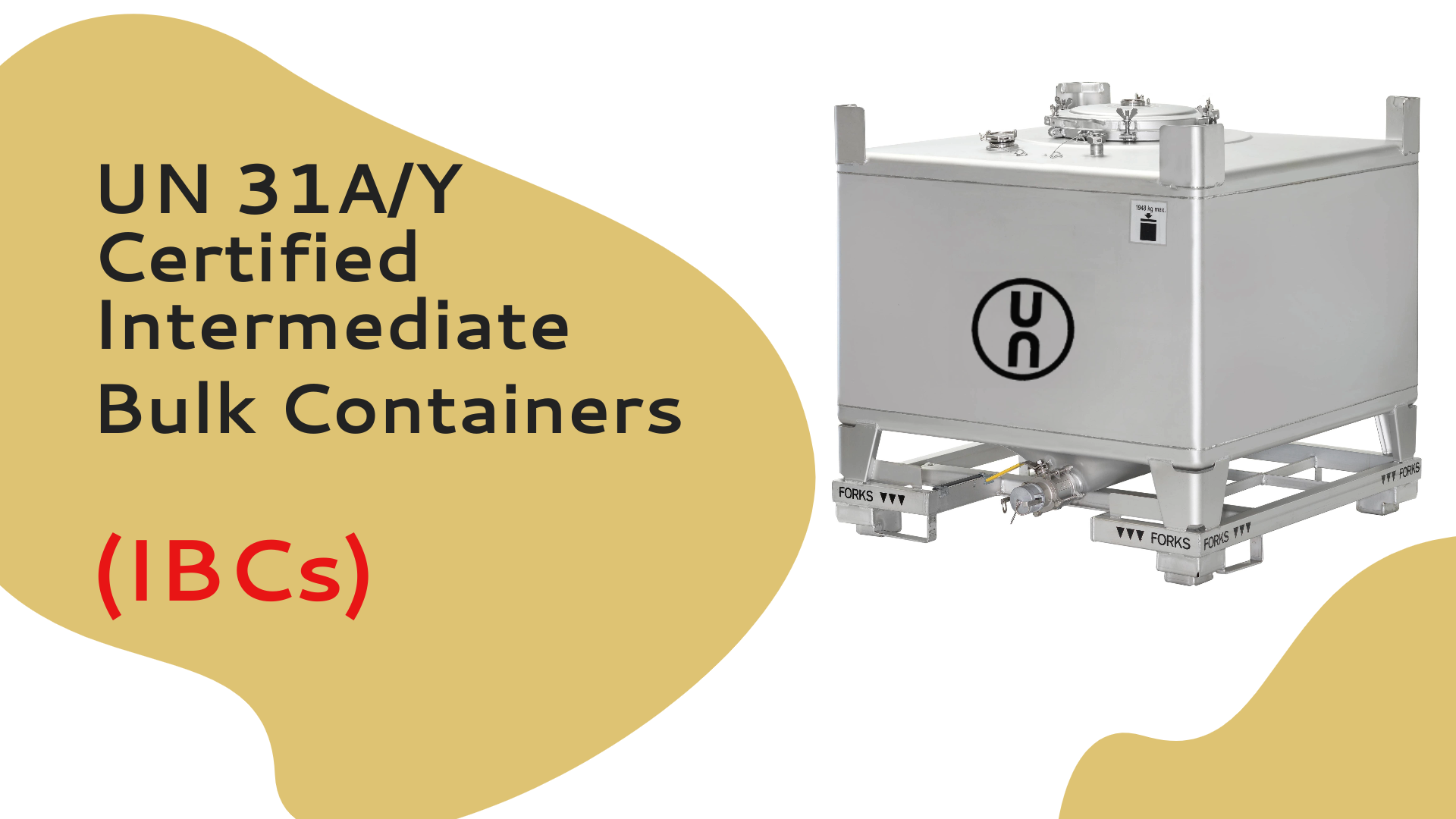
Unlocking the Power of UN 31A/Y Certified Intermediate Bulk Containers (IBCs) in Hazardous Material Transport
In the realm of hazardous material transport, ensuring the safety and integrity of the substances being moved is paramount. One of the cornerstones of this safety framework is the use of UN 31A/Y certified Intermediate Bulk Containers (IBCs). These specially designed containers provide a robust solution for the transportation of dangerous goods, offering a combination of durability, versatility, and compliance with international regulations. In this blog, we will explore the significance of UN 31A/Y certification, the features that make these IBCs stand out, and their crucial role in ensuring the secure movement of hazardous materials.
Understanding UN 31A/Y Certification
The UN 31A/Y certification is a stringent standard set by the United Nations for packaging hazardous materials for transportation. This certification specifically pertains to IBCs, which are large containers used to store and transport bulk quantities of liquids and granulated substances. The "31A" indicates that the container is suitable for liquids, while the "Y" signifies that it meets the requirements for solids as well.
The UN 31A/Y certification involves a series of rigorous tests and evaluations to ensure that the IBC can withstand the challenges associated with transporting hazardous materials. These tests encompass various aspects, including structural integrity, leak-tightness, and resistance to external forces such as impact and stacking. Only containers that pass these stringent tests receive the coveted UN 31A/Y certification.
Features of UN 31A/Y Certified IBCs
- Structural Integrity:
UN 31A/Y certified IBCs are constructed with materials that provide exceptional strength and durability. The containers are designed to withstand the mechanical stresses encountered during transportation, such as vibrations, stacking, and sudden impacts. This structural integrity ensures that the hazardous materials remain securely contained, minimizing the risk of leaks or spills. - Leak-Tightness:
Leakage is a critical concern when transporting hazardous materials. UN 31A/Y certified IBCs undergo thorough testing to verify their leak-tightness under various conditions. This ensures that even in the event of unforeseen circumstances, such as a sudden change in temperature or pressure, the container maintains its integrity, preventing the escape of dangerous substances. - Compatibility with Hazardous Materials:
These IBCs are designed to accommodate a wide range of hazardous materials, including flammable liquids, corrosive substances, and toxic chemicals. The materials used in the construction of UN 31A/Y certified containers are selected to be compatible with the specific characteristics of the substances they will transport. - Regulatory Compliance:
Compliance with international regulations is a non-negotiable aspect of hazardous material transport. UN 31A/Y certified IBCs are manufactured in accordance with the United Nations recommendations and other relevant regulatory standards. This ensures that companies using these containers are in adherence to global safety guidelines. - Versatility:
UN 31A/Y certified IBCs are versatile in their applications. They can be used for the transportation of various hazardous materials across different industries, including chemicals, pharmaceuticals, and manufacturing. The standardized design and features make them a preferred choice for companies seeking a reliable and efficient solution for bulk material transport.
The Crucial Role of UN 31A/Y Certified IBCs in Hazardous Material Transport
- Risk Mitigation:
Transporting hazardous materials inherently involves risks, but UN 31A/Y certified IBCs significantly mitigate these risks. The robust construction and design of these containers reduce the likelihood of accidents, ensuring that the substances reach their destination without compromising safety. - Environmental Protection:
The containment of hazardous materials is not only about protecting human safety but also safeguarding the environment. UN 31A/Y certified IBCs contribute to environmental protection by preventing spills and leaks that could have far-reaching consequences on ecosystems and water sources. - Global Trade Facilitation:
In an interconnected global economy, the transportation of hazardous materials is an integral part of international trade. UN 31A/Y certified IBCs facilitate the smooth flow of goods by providing a standardized and accepted means of transporting hazardous materials across borders. This streamlining of processes benefits both manufacturers and consumers. - Emergency Response Preparedness:
In the rare event of an accident or emergency, the use of UN 31A/Y certified IBCs supports effective emergency response efforts. Emergency responders can rely on the standardized design and features of these containers, making it easier to assess and manage situations involving hazardous material spills.
UN 31A/Y certified Intermediate Bulk Containers represent a pinnacle in the safe transportation of hazardous materials. Their robust construction, adherence to international standards, and versatility make them indispensable in industries where the movement of dangerous goods is a daily reality. As companies continue to prioritize safety, environmental stewardship, and regulatory compliance, the use of UN 31A/Y certified IBCs is set to play an increasingly vital role in shaping the future of hazardous material transport on a global scale.
Contact CSC
 All Major Credit Cards Now Being Accepted. Charges may incur.
All Major Credit Cards Now Being Accepted. Charges may incur.